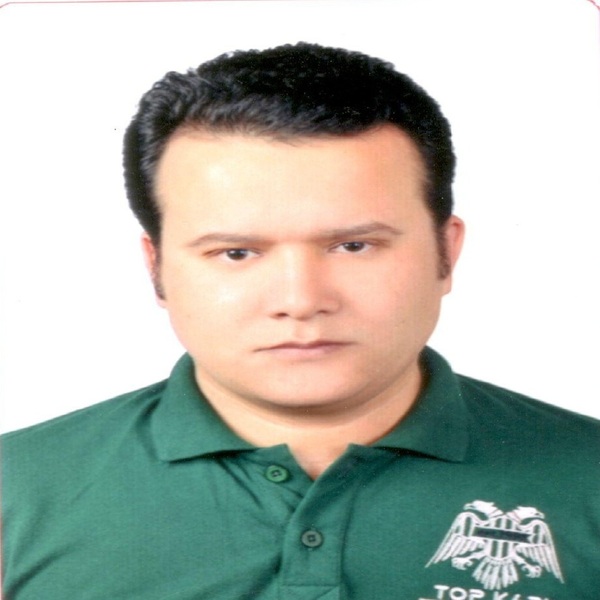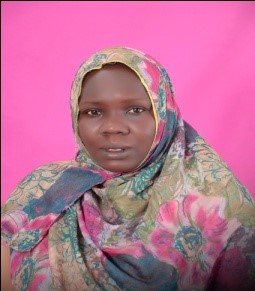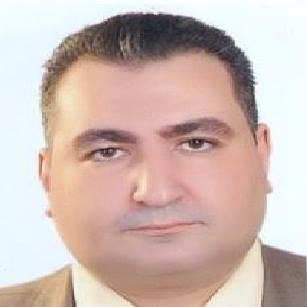
|
Moringa leaf extract stimulates growth and yield of cucumber (Cucumis sativus L.)
|
|
|
Mohamed E. Ahmed and Abdelnaser A. Elzaawely
|
|
|
Faculty of Agriculture, Tanta University, Tanta, Egypt
|
|
|
dr.memahmed@agr.tanta.edu.eg
|
|
|
2
|
|
|
A greenhouse study was conducted in 2017 and 2018 growing seasons to evaluate the growth and yield of cucumber (Cucumis sativus L.) F1 hybrid cv. ‘Hesham’ in response to foliar spray with three concentrations (1:40, 1:30 and 1:20) of moringa leaf extract (MLE). The analysis of the MLE indicated its high levels of phytohormones. Cucumber growth traits (plant height, leaf area, number of leaves, fresh and dry weight of leaves and stem) and flowering traits (number of flowers, days to the first female flower and fruit set) were significantly enhanced following the foliar spray with MLE. The growth and development of cucumber fruits (fruit fresh and dry weight, and fruit total yield) were also promoted in response to the treatments. MLE treatments markedly increased the endogenous hormone levels (auxins, gibberellins and cytokinins) and enhanced the activity of the antioxidant enzymes catalase (CAT), peroxidase (POX) and superoxide dismutase (SOD) in cucumber leaves. This stimulation effect revealed that MLE might be utilized as effective natural and safe biostimulant in organic agricultural production.
|
|

|
Use of Sunflower Water Extract and Extract Fractions as a Natural Weed Inhibitor in Wheat
|
|
|
Hazem M. Amine
|
|
|
Faculty of Agriculture, Tanta University
|
|
|
hazem.abdellatief@agr.tanta.edu.eg
|
|
|
13
|
|
|
A field trial was carried out to examine the feasibility of using sunflower water extract and extract fractions as a natural weed inhibitor in wheat during 2017 at Faculty of Agriculture, Tanta university. Sunflower sprays (1-4) were tested and compared with one hand weeding and pre-emergence application of pendimethalin. Results of the study showed that three foliar sprays of sunflower (20 + 30 + 40 DAS), one hand weeding (30 DAS) and pendimethalin spray inhibited the total weed density by 32.58, 21.81 and 35.96%, respectively. An inhibition of 45.12, 27 and 45% in total weed dry weight was noticed by three sunflower sprays, one hand weeding and pendimethalin treatment, respectively. Three sunflower sprays enhanced grain yield of wheat by 20%, while hand weeding and pendimethalin treatment increased grain yield by 11% and 15%, respectively, The hexane, ethyl acetate, and water fractions, which obtained from the leaves extracts of sunflower inhibited the seed germination of weed species
|
|

|
Semen Quality, Sexual Desire and Relevant Blood Plasma Parameters of Egyptian Buffalo Bulls Administrated with deferent antioxidant
|
|
|
Hammad, M. E. R.; H. A. El-Nagar; A. A. Gabr and A. R .Hemida
|
|
|
كلية الزراعة - طنطا
|
|
|
ahmed.gabr@agr.tanta.edu.eg
|
|
|
23
|
|
|
Sperm damage and loss of about 50% associated with the formation of ice crystals and free radicals during the freezing / thawing process leads to lower fertility in artificially fertilized buffalo due to poor sperm tolerance to freezing compared to other species.Hence the aim of this study was to evaluate theeffect of daily oral administration of N-Acetyl cysteine (NAC) and L-carnitine (LC) for 3 mo on sexual desire, some physical semen characteristics and blood parameters traits of Egyptian buffalo bulls. Total of 20 bulls (400 kg LBW and 24 mo of age) were assigned into 4 groups. Bulls in G1, G2, G3 and G4 were fed the same diet and kept under the same conditions, but differed oral dose 0.0 g/h/d, 3.0 g/h/d NAC, 3.0 g/h/d LC and )1.5 NAC +1.5 LC g/h/das a combination(, respectively. Bulls were received for 3 mo (treatment period). At the end of treatment, semen was collected from bulls twice a week for 12 wk, blood samples were collected twice a month for 3 mo and evaluated.Results show that bulls in G4 showed highest only concentration of TP, Al and Gl increased (P<0.05), while AST and ALT activity, CHO and TL concentrations reduced (P<0.05) in all treated groups than in the control group, being the best in G4. All semen characteristics improved (P<0.05) in all treated groups than in the control group, being better (P<0.05) in G4 than in G2, G3. Plasma testosterone and total antioxidant capacity concentration was higher (P<0.05) in G4, G3 and G2 than in G1, being the best in G4. Inconclusion, daily oral administration of NAC(1.5 g/h/d) and LC(1.5 g/h/d)as a combination for 3 moimprove health status, immunity response and antioxidant capacity,had impact to achieve high quality semen to spread the use of artificial insemination with bulls of high fertility.
|
|

|
The use of crude pectic enzyme produced by Aspergillus sojae in beans processing
|
|
|
Atta MB1, Lahore MF2and AbdRaboh F Fatma1
|
|
|
جامعة طنطا
|
|
|
mohamed.ataa@agr.tanta.edu.eg
|
|
|
24
|
|
|
Abstract
Two samples of kidney beans (Phaseolus vulgaris L) with different colors of seed coat (red and white) were used in this study. The beans were soaked in crude pectin enzymes produced by Aspergillussojae L (PGzym) for different times (30, 60, 90, 120 and 150 min) at various temperatures (room temperature and 45ᴼC) along with two commercial fungal enzymes named Pectinex and Flavouryme in order to improve beanscookability. The result revealed that water uptake (hydration rate) influenced by sort of bean and soaking temperature. Where the hydration rate of bean was improved at 45ᴼC. Mode of action and concentration of enzyme are two factors influence water uptake and substances that leached out from beans to liquor remaining after soaking (LRAS) and cooking broth (CB). Where, significantly (p˂0.05) higher amounts of total soluble solids (TSS), total (TS), reducing (RS) non-reducing (NRS) sugars and total phenolics (TP) are found in LRAS due to the presence of enzyme in the soaking medium. The amounts of leached substances augmented when the enzyme concentration increased in the soaking medium.It could cut cooking time of red beans by up to 70% and white beans up to 50% by using 0.1% commercial enzymes or 0.5% of PGzym in the soaking medium. Crude PGzym seemed to be richer in exoglucanases than those of commercial enzymes.
Key words: Pectic enzymes, Hard-to-cook beans, Cookability, Phenolics, Endo´-polygalacturonase
|
|

|
Analysing and mapping soil quality in El Fayoum Depression using geostatistical techniques
|
|
|
Shokr, M.S1; El Baroudy, A. A1.; Abdellatif, M.A2, Attia,W2.
|
|
|
1Soil and Water Department, Faculty of Agriculture, Tanta University, Tanta, Egypt 2National Authority for remote sensing and space science (NARSS), Cairo, Egypt
|
|
|
m.s012@yahoo.com
|
|
|
34
|
|
|
Soil ecosystem, goods and services are the main parameters for agricultural development of Egypt. Soil quality requires an integration of three major components; sustained biological productivity, environmental quality, and plant and animal health. The main object of this study is using geostatistical techniques by GIS software’s to identify the appropriate indicators for evaluating soil quality in El Fayoum Depression. The results show that ordinary co-kriging is the best method for geostatistical techniques. Soils of the high soil quality occupy of the 4.22% of the total area, the intermediate quality occupy 72.64% of the depression area, whereas; the low soil quality occupy 23.12% of the study area. According to the comparison of soil quality of soil data 2019 and soil data 2013, was found a deterioration of soil quality due to intensive agriculture practices and mismanagement. In addition, this study may improve soil agriculture practice in the El Fayoum Depression and introduce a better geostastical method to analyse soil quality rapidly and economically which, consider the most important parameter for sustainable agriculture and to protect natural resource.
|
|

|
Assessment of Soil Degradation in some soils of West Alexandria – Egypt, by Using Geographic Information System (GIS) techniques.
|
|
|
Sally, A. Yassin1; El Baroudy, A. A.2; Rafie, M. R.2; Abd El-Halim A. A.1
|
|
|
1Chemistry and Soil Physics Department, Water Resources and Desert Soils Division, Desert Research Center, Cairo, Egypt 2Soil and Water Department, Faculty of Agriculture, Tanta University, Tanta, Egypt
|
|
|
drbaroudy@yahoo.com
|
|
|
35
|
|
|
Soil degradation is a major problem in many world regions, especially, arid and semi-arid regions, due to the bad management of the soil. Land degradation is defined as a reduction in soil capacity to produce crops or biomass for humans and livestock. From the ecological perspective, land degradation is seen as damage to the healthy functioning of land-based ecosystems. Degradation first affects the soil main land constituent. The objective of this study is to monitor qualitatively some deterioration problems such as water-logging, salinization and compaction using the data and methods available for assessing degradation in the western Mediterranean Coastal Zone of Egypt at Bahieg region. The results indicated significant negative relationship between soil productivity and each of soil salinity, exchangeable sodium percentage, structural stability index and penetration resistance. On the contrary, soil productivity displayed significant positive relationship with soil depth. Bahieg area is characterized by Areas already highly degraded due to water logging, salinity and compaction. Design, execution and maintainace of open or tile drainage for avoiding water logging problem.
|
|

|
Fast and Easy Multiresidue Method for Determination of 55 Pesticide Residues in Commonly Consumed Fruits and Vegetablesfrom Egyptian Local Markets
|
|
|
Sobhy,A. Hamed1; Dalia,E. Elhefny2;Ahmed, A.A. EL-Ghanam2
|
|
|
Associate professor
|
|
|
soubhy.hamed@agr.tanta.edu.eg
|
|
|
36
|
|
|
Abstract
The highest concerns of consumers who need food safety is pesticide residues in fruits and vegetables. In this study, a total fifty-five pesticide residues from different chemical groups including insecticides, fungicides, herbicides, acaricides and others compounds were detected in different kinds of fruits (apple, grapes,guava and cantaloupe) and vegetables (squash, cucumber,tomatoes and pepper) collected from local markets in Cairo governorate. The method is based on a modified QuEChERS procedure (Quick, Easy, Cheap, Effective, Rugged, Safe) employing acetonitrile for extraction and partition. Dispersive solid phase extraction (dSPE), was used for cleanup. Analytical determinations of the 55 pesticides were carried out by gas chromatography using micro electron capture detector (µECD) and flame photometric detector (FPD). All different samples of fruits and vegetables were examined for residues of 55 pesticides. The results showed that, the mean recoveries of the pesticides were between 70.3 and 107.3 %. The limits of detection (LOD) and quantification (LOQ) of pesticide residues for the method were ranged from 0.002 to 0.009 (µg/g) and between 0.01 to 0.05 (µg/g) respectively.
Of the 55 pesticides analyzed,32(58.2%), 31(56.4), 34(61.8) and 27(49.1) of pesticide residues were detected in the apple, grapes, guava and cantaloupe respectively, while 30(54.5%), 31(56.4%), 30(54.5%) and 24(43.6) of pesticide residues were detected in the squash, cucumber, tomatoes and pepper respectively.
The percentages of pesticide residues that exceeded the MRLs for different types fruits (apple.grape, guava and cantaloupe) were 12.7%,16.4%, 16.4% and 3.6%, respectively and different vegetables (squash, cucumber, tomatoes and pepper) were 5.5%, 7.3%, 3.6% and 9.1% respectively.
|
|

|
Biodiesel Production Parameters Optimization from Sunflower and Soybean Oil Mixture using Response Surface Methodology
|
|
|
Medhat Elkelawy1*, Hagar Alm-Eldin Bastawissi1, Khaled Khodary Esmaeil1, Ahmed Mohamed Radwan1
|
|
|
1 Mechanical Power Engineering Departments, Faculty of Engineering, Tanta University, Tanta, Egypt
|
|
|
medhatelkelawy@f-eng.tanta.edu.eg
|
|
|
40
|
|
|
Biodiesel is a promising alternative solution for energy crises, as it is renewable, biodegradable, non – toxic and fully competitive with petrol diesel in most technical aspects. Biodiesel is mono-alkyl esters of long chain fatty acids can be prepared from acyl-glycerol (natural triglyceride) which exist in vegetable oils. It can be achieved via a transesterification process with short-chain alcohols in the presence of a catalyst. Reaction variables of biodiesel have a significant impact on methyl ester yield such as methanol/oil ratio, catalyst concentration, reaction time, and mixing speed that has optimized using response Surface Methodology (RSM). RSM is a set of mathematical and statistical techniques used to model and analyze engineering problems that influenced by several variables. A quadratic response surface regression model is utilized to analyze the experimental data. The aim of this study is to analyze and optimize catalyzed transesterification reaction variables by a standard Box- Behnken experimental design (BBD) to obtain maximum biodiesel yield. Biodiesel properties produced from Sunflower and Soybean Oil Mixture met with the American society for testing and materials (ASTM) D6751 standards.
|
|

|
Identify Recharging sources and study the chemical evolution of groundwater, West Esna, Western Desert, Egypt
|
|
|
Hesham A. Ezzeldin and Usama A. Abu Risha
|
|
|
Water Resources and Desert Soils Division, Desert Research Center
|
|
|
h.ezzeldin@hotmail.com
|
|
|
49
|
|
|
The increase of the reclaimed lands for agriculture, especially in the western desert of Egypt is substantial to cope with the population increase. The western region of Esna in the Western desert is one of the most promising areas where there are remarkable agricultural activities that depend mainly on groundwater. The present study aims at identifying the recharging sources as well as studying the quality evolution of the groundwater in the quaternary aquifer (the main aquifer) and suggesting the best ways for its management. Nineteen groundwater level measurements and analyses of trace element and major ion concentrations in twenty five groundwater samples, Nile water sample, and an irrigation canal water sample were performed in order to determine the source/s of groundwater recharge and its chemical evolution. Subsurface sediment succession of some sampled wells show the impact of a clay lens on the groundwater salinity in the northwestern part of the area. There is also a water leakage from an irrigation canal into the subsurface aquifer causing water level rise in the aquifer. A shallow clay layer causes water logging near a sewage station. Contamination of the aquifer has been detected near the sewage station, which discharge the wastewater into drains. The wastewater in such drains is used in the irrigation of the trees forests. Recharge is mainly from the western highland, which is dissected by Wadi Esna and its tributaries in the south and Wadi el Rukham in the north. The Nile itself represents a discharge canal whereas the irrigation canals with higher levels than the Nile River represent sources of groundwater recharge. The main geochemical evolutionary processes are the freshening by flash flood and irrigation canal waters, cation exchange processes, and the water-rock interactions.
|
|

|
Seepage Through an Earth Dams with Internal Cut Off
|
|
|
Michael George H. Attia, Mohamed Abdelrazek and Adel Abdelsalam
|
|
|
Irrig. Engineering and Hydraulics Department, Faculty of Engineering, Alex. University, Egypt
|
|
|
eng.michael_george@yahoo.com
|
|
|
114
|
|
|
Failure in earth dams mainly occurs due to seepage to the unprotected downstream face of the dam. Therefore, many precautions are taken into consideration to protect dams from this phenomenon. Construction horizontal, inclined, trapezoidal or pipe filters one of the dam protection methods. Cut off can be constructed to minimize seepage discharge directed to the downstream face of the dam. Seepage through an earth dam with internal cut off is experimentally studied in the laboratory of Irrigation Engineering and Hydraulics Department, Faculty of Engineering, Alexandria University, Egypt on a Hele-Shaw model. Effect each of the relative penetration depth (d/D) and the relative distance of cut off (X/Dw) on both the relative drop in the total head upstream (∆H/H) and relative length of filter (Lf/H) is studied. The optimum position of cut off also is obtained from analysis of the experimental results. Experimental results are drawn in dimensionless form and listed in tabulated form.
|
|

|
Hydrological Modelling of Eastern Nile Basin Using A Fully Distributed Model Based on TRMM 3B42V7 Satellite Precipitation Product
|
|
|
Hadir Abd-El Moneim, Mohamed Reda Soliman, Hossam M. Mogazhy
|
|
|
M.Sc. student, Assistant Professor, Professor of Irrigation Engineering and Drainage, Faculty of Engineering, Alexandria University, Egypt.
|
|
|
hadir_eng@yahoo.com
|
|
|
128
|
|
|
The Eastern Nile is considered the pivotal region in the Nile River where it represents almost 83% of the total Nile flow at Dongola. Recently, the conflict potential over Nile waters is increasing due to the continuous growing of population, agricultural expansion, and industrial development. On the other hand, the future challenges such as proposed and existing dams construction and development projects in upper Nile countries and climate change that will affect Egypt's share of the Nile river. Therefore, it is necessary to assess and predict the availability of water resources. This study used a fully distributed Hydrological River Basin Environment Assessment Model (Hydro-BEAM) to simulate the streamflow in the Eastern Nile basin for the period (2001-2007) based on the high-resolution satellite product (TRMM 3B42V7). The simulated runoff was examined and calibrated at Khartoum, Sennar dam, ElDeim gauging, Dongola, Atbara and AHD stations. Overall, the monthly simulated streamflow was very closer to the measured discharge, with a Nash-Sutcliffe efficiency coefficient (NSE), the coefficient of determination (R2) and the percent bias (PBias) for calibration period. This work will provide to investigate the potentiality the fully distributed hydrological model Hydro-BEAM for simulating the streamflow of the Eastern Nile basin that it will be a vital tool to estimate and predict the availability of water resources.
|
|

|
Agricultural Groundwater Sustainability Assessment under Current Extraction Rate, Case Study: New Reclaimed Area in Sahl Baraka, Farafra Oasis
|
|
|
Yahya Elmansy1, Mahmoud Samy AbdelSalam Mohamed2, Ahmed A. Hassan2, A.M.El-Gindy 3, Peter Riad2
|
|
|
1Ph.D. Student, Irrigation and Hydraulics Department, Faculty of Engineering, Ain Shams University, Cairo, Egypt & Assistant Lecturer, Civil Engineering Department, Faculty of Engineering, The British University in Egypt. 2Irrigation and Hydraulics Department, Faculty of Engineering, Ain Shams University, Cairo, Egypt. 3Agricultural Engineering Department, Faculty of Agriculture, Ain Shams University, Cairo, Egypt.
|
|
|
yahya.elmansy@bue.edu.eg
|
|
|
220
|
|
|
Groundwater is a valuable natural resource. It is used as the only source of irrigation water for new reclamation areas in Sahl Baraka, Farafra oasis. Sahl Baraka is located in the regional extent of Nubian Sandstone Aquifer (NSA) in the Western Desert of Egypt. NSA is a non-renewable shared aquifer between Egypt, Sudan, Chad, and Libya. In order to preserve this valuable natural resource, the requirements for sustainable groundwater usage have to be fulfilled and groundwater over exploitation has to be avoided. Over exploitation of groundwater leads to undesirable side effects such as lowering the groundwater potentiometric level (GPL). This leads to drying-up of running springs, increasing pumping cost, and, in some cases, deterioration of groundwater quality. Groundwater extraction from NSA has increased and consequently the GPL declines. Since NSA is non-renewable, there is no aquifer recharge and the concept of safe yield or discharge equals recharge is not applicable. The ministry of water resources and irrigation (MWRI) put the criteria of groundwater sustainability, duration and economic lifting depth criteria, for new groundwater dependent reclamation areas. This paper presents an assessment of groundwater sustainability under current extraction rate, Qwell = -2500 m3/day, according to the MWRI sustainability criteria, for a new groundwater dependent reclamation area of 10000 feddan in Sahl Baraka, Farafra oasis, as a case study. This area has been simulated and numerically modeled using ModFlow. The model was calibrated and used to obtain the depression cone drawdown (DCD) associated with the current extraction rate. All NSA drawdown rates at Farafra oasis were considered. Benefit –Deficit analysis for duration and economic lifting depth criteria are presented and show that the current extraction rate is sustainable according to the adopted sustainability criteria.
|
|

|
Management of Postharvest Diseases of Citrus through Environment Friendly Approaches
|
|
|
Zafar Iqbal, Muhammad Zohaib Anjum, Awais Ahmad Khan, Salman Ahmad and Muhammad Asim
|
|
|
Department of Plant Pathology, College of Agriculture, University of Sargodha, Pakistan; Corresponding Author’s E. mail: zafarrohils@yahoo.com
|
|
|
zafarrohils@yahoo.com
|
|
|
249
|
|
|
Diverse pre- and postharvest pathogens attack citrus fruits causing enormous losses to citrus industry all over the world. Currently, postharvest diseases are controlled by application of synthetic fungicides after harvesting of fruit. Fungicides not only pollute the environment but also cause serious health hazards and social concerns. Keeping in view the devastating consequences, the demand for organic and residue free fruit has increased in the world. In the present study, three plant extracts were tested to explore their antifungal properties against Penicillium itlaicum causing blue mould of Kinnow mandarin (Citrus reticulata). Plant extracts viz. Calotropis procera, Convolvulus arvensis and Thymus vulgaris were applied to surface of Kinnow fruit (Citrus reticulata) at 10, 20 and 30% conc. each. Then fruit treated with plant extracts were subjected to inoculation by viable spore suspension of fungus Penicillium italicum. Among the tested plant extracts, extract of C. procera proved to be much effective when applied on fruit surface alone or in combination with commercial wax. Extract of C. procera combined with commercial wax reduced the mycelial growth of fungus Penicillium italicum to 11.8, 22.5, 34.5 and 45.8 mm on 4th, 5th, 6th and 7th day of inoculation in comparison to control which showed maximum fungal growth of 42.5, 63.5, 78.0 and 91.0 mm on fruit surface in the same order. This treatment is equally effective for other postharvest diseases which inflict economic losses to the orchardists. It not only reduced the fruit rotting, but also increased the shelf life of Kinnow fruit. This study ensures blemish and residue free fruit and provides eco-friendly solution for the management of postharvest disease of citrus.
|
|

|
Regional Climate Change Impact on Future Drought Conditions in the Upper Blue Nile River Basin of Ethiopia
|
|
|
Mosaad Khadr, Mohamed Elkollaly
|
|
|
Faculty of Engineering, Tanta University
|
|
|
mosaad.khadr@f-eng.tanta.edu.eg
|
|
|
264
|
|
|
Recently, water resource of Nile river basin has suffered from increasing demands and global warming impact that exacerbate occurrences of hydrologic extremes such as drought. Impacts of climate change on both severity and intensity of future droughts can be evaluated based on precipitation and temperature projections and various drought indices. In this paper, the spatiotemporal variation in intensity and duration of future droughts in the Upper Blue Nile river basin (UBNRB) are analyzed using the Standardized Precipitation Index (SPI) and the Standardized Precipitation Evapotranspiration Index (SPEI). The projected intensity and duration of future drought events are analyzed under short-term (2030s) and long-term (the 2060s) for two respective concentration pathways RCP4.5 and RCP8.5 climate scenarios of four General Circulation Model (GCMs). Trend analysis of the drought indices was performed using nonparametric Mann–Kendall (MK) test and the discrete wavelet transform technique (DWT). The results were revealed that under downscaled RCP4.5 and RCP8.5 climate scenarios, the average annual rainfall is projected to increase in the future and the SPI and SPEI are projected to increase, which implies that UBNRB could experience more severe and frequent extreme precipitation in future. Furthermore, spatial analysis illustrated that the situation in the study area according to the SPI and SPEI classification is characterized mostly as “Near-normal”, in terms of drought conditions.
|
|

|
Comparative Effects of Soil Amendments and Nano-Zinc Foliar Application on Saline-Sodic Soil Properties and Wheat Production
|
|
|
M. S. El-Sharkawy, M. A. Abd EL-Aziz, T.H. H. Khalifa
|
|
|
Lecturer of Soil and Water Departments, Fac. of Agric. Tanta Uni., Egypt
|
|
|
mahmoud.elsharkawy@agr.tanta.edu.eg
|
|
|
316
|
|
|
Salinity and alkalinity of soils are two fundamental factors that limit plant growth and productivity. For that reason, field experiment was conducted during winter season of 2018/2019 in Sakha Agric. Res. Station Farm, North Delta, Kafr El-Sheikh Governorate, Egypt. This study aimed to investigate the effect of soil amendments via. gypsum (G), compost (C) and zinc foliar application ZnSO4 (Z1) and Nano-ZnO (Z2) as well as their combination on some soil physicochemical properties and wheat productivity under saline sodic condition. The results revealed that the application of gypsum with compost and Nano-ZnO foliar application decreased soil ECe, SAR and ESP by 14.81, 42.8, 37.63%, respectively. While, The removal sodium efficiency (RSE%) clearly increased with the combination amendments according the following descending order: G+C+Z2˃G+C+Z1˃G+C˃G+Z2>G+Z1˃G˃C+Z2>C+Z1 compared to individual treatments. Also, the plots amended by G+C+Z2 seemed to enhance wheat biomass values recording highest plant height (98.0 cm),1000-grain weight (57.03g), grain yield (7.07 Mg.ha-1) and straw yield (9.93 Mg.ha-1) as same as total nutrient contents and uptakes as compared to control. Data also, revealed that foliar application with Nano-ZnO was more effective than foliar application with ZnSO4.
|
|

|
Tetraploid induction, flow cytometer identification and characterization of Chinese privet (Ligustrum sinense Lour.)
|
|
|
Mohammed I. Fetouh and Zhanao Deng
|
|
|
Mohammed I. Fetouh1 Horticulture Department, Faculty of Agriculture, Tanta University, Tanta, Egypt; and Institute of Food and Agricultural Sciences, Gulf Coast Research and Education Center, University of Florida, 14625 County Road 672, Wimauma, FL 33598. ORCID ID: https://orcid.org/0000-0003-3696-6037 Zhanao Deng2 Department of Environmental Horticulture, Gulf Coast Research and Education Center, Institute of Food and Agricultural Sciences, University of Florida, 14625 County Road 672, Wimauma, FL 33598. ORCID ID: https://orcid.org/0000-0002-7338-3298
|
|
|
mohammed.fetouh@agr.tanta.edu.eg
|
|
|
343
|
|
|
This study introduces the first case of successful induction of Ligustrum sinense tetraploid plants and the detailed methodology to induce such polyploidy plants via colchicine application. In addition, the genome size of diploid and tetraploid plants of Ligustrum sinense was also studied. Induction of tetraploid plants was achieved by treating individual emerged seedling with 0.1, 0.2, 0.3 or 0.4% (w/v) colchicine. Lower concentration of colchicine resulted in the highest frequency of tetraploid (30.77 %) and decreased the mortality ratio of treated seedlings. Colchicine suspension treatments resulted in various ploidy levels of Ligustrum sinense including diploid, tetraploid, and mixaploid depending on colchicine concentration. Determination of genome size revealed that nuclear DNA content of tetraploid plants was 4.67±0.08 pg/2C, which is 94.58% higher than that of diploid plants. Tetraploid plants recorded variation in morphological traits compared to diploid plants. They were more compact, 25.35% short, 20.05 % less branch number, 47.97 % large leaf size, and 71.83 % more fresh and dry leaf weight in comparison to diploid plants. Leaf stomatal analysis shows that tetraploid leaves contain 45.7% lower number of stomata and 32.16% bigger stomatal size than diploid plants. This is suggesting that induced tetraploid plants have the possibility of being more drought tolerance than diploid plants, which remain to be evaluated in Ligustrum sinense. Results reveal that succeseful induction of tetraploid Ligustrum sinense produced less invasive plants with new remarkable traits that needed more evaluation under landscape cultivation conditions.
Key words: Ligustrum sinense, Tetraploid Induction, DNA Content, Stomata, Colchicine, Chines Private, Ploidy Manipulation.
|
|

|
أسس تنمية الموارد الطبيعية في السودان " دراسة حالة مورد الغابات The bases of developing natural resources in Sudan "Case study of forest resource""
|
|
|
Dr. Intsar Mohammed Saboun د. إنتصار محمد صابون
|
|
|
Dalanj University / Sudan جامعة الدلنج/ السودان
|
|
|
intisarsaboon@yahoo.com
|
|
|
1357
|
|
|
الموارد الطبيعية بشقيها المتجددة والغير متجددة ثروةً طبيعيةً ذات قيمةٍ إقتصاديةٍ عالية، يعود إستثمارها علي الفرد والمجتمع بالخير الوفير إذا ما استغلت استغلالاً أمثلاً أذ يراعي فيها الحماية والتنمية من أجل استدامتها لتدفق خيراتها. وأغلب هذه الموارد طبيعية في أصلها تستخدم من خلال أنشطتنا لتحولها إلى موارد مصنعة يستفاد منها في شتى ضروب الحياة. ويعتبر الصراع على الموارد الطبيعية من أهم التحديات التي تواجه عالم اليوم بصفة عامة والدول النامية بصفة خاصة لا سيما الأفريقية، في ظل تنامي السكان مصحوباً بتناقص هذه الموارد وتنامي الطلب عليها لمواجهة متطلبات البقاء في عالم صارت تحكمه الصراعات السياسية والإجتماعية والإقتصادية, مما أدى لإستنزاف هذه الموارد الشيء الذي يمثل خطراً على إتاحتها(آدم, 2000).
والسودان من الدول الغنية جداً بالموراد الطبيعية المتجددة من موارد مائية, موارد تربة متنوعه زراعية, موارد ثروة حيوانية, موارد معدنية, موارد الغابات ومنتجاتها, موارد المراعي طبيعية, وغيرها.
وتعتبر الغابات أحد الموارد الطبيعية الرئيسية في العالم وهي تغطي 1/3 مساحة الكرة الأرضية. وتعد من أهم الموارد الطبيعية اذ أنها توفر الخامات الأساسية لمجموعة من الصناعات التي تسهم في تطوير إقتصاد البلدان علي أساس سليم. وتغطي الغابات حوالي 29,6% من مساحة السودان (74,1 مليون هكتار)، وتساهم بغالبية احتياجات البلاد من الأخشاب المنشورة ومواد البناء وأعلاف الثروة الحيوانية القومية، إضافة إلى توفيرها لحوالي 15% من العمالة الريفية (الهيئة القومية للغابات, السودان, 2017).
ومن المعروف أن موارد الغابات لديها المقدرة على التجدد عندما يتم التعامل معها بطرق معينة. علماً بأن هذه القدرة ومداها يتوقف على طبيعة المورد، الظروف البيئية، الظروف الاجتماعية مثلاً. لكن في السنوات الأخيرة من هذا العقد بدأ هذا المورد ينضب ويستنزف لعده أسباب منها القطع الجائر, إزالة بعض الأشجار والحرائق وذلك إما لإنتاج الفحم والحطب أو غيره كوقود الشئ الذي يمكن أن يؤدي إلى التصحر والتعرية.
وتستهدف هذه الدراسة إلقاء الضوء علي الوضع الحالي لمورد الغابات في السودان ومنتجاتها,
|
|

|
الاقتصاد الأخضر ودوره في تحقيق التنمية المستدامة
|
|
|
محمد السيد السيد جودت الشاعر
|
|
|
الهيئه القوميه للتأمين الإجتماعى - بالمنصورة
|
|
|
m_e505@yahoo.com
|
|
|
1361
|
|
|
مع تزايد الضغوط على البيئة نتيجة الالتزامات والنشاطات المختلفة التي تخدم الاقتصاد وخاصة في الدول الصناعية الكبرى، بدأ يظهر مفهوم الاقتصاد الأخضر وهو يعني تحقيق النمو والتنمية المستدامة دون الإخلال بالنظام البيئي وكذلك توفير المساعدات والمنح للدول الفقيرة من أجل النهوض بالتعليم والصحة والبنية الأساسية، وبذلك تتحقق العدالة والمساواة في التنمية.
اليوم اكثر من مليار شخص يستخدمون ويستغلون البيئة ، الحكومات تعاني من الأزمات المالية العالمية ، والفجوة بين الاغنياء والفقراء تزداد اكثر، واذا استمر إهدار الموارد سوف ينتج عنها أزمات اقتصادية ضخمة.
بشكل اخر فان معدلات النمو الحالية ليست مستدامة، فهناك طريقة واحدة الى الامام وهو الاتجاه الى الاخضر لتعزيز النمو الاقتصادي العالمى .
بدأ الاهتمام والتوجه نحو الاقتصاد الاخضر باعتباره نشاط اقتصادي صديق للبيئة وإحدى سبل تحقيق التنمية المستدامة.
من هذا المنطلق سوف تتجه دراساتنا حول إمكانية المضي نحو الاقتصاد الأخضر والاعتماد في الصناعة والاستثمار على الطاقات الجديدة والمتجددة مثل الرياح والطاقة الشمسية، من اجل تحقيق تنمية مستدامة، تصاحبها اثار بيئية نظيفة غير ضارة وآثار اجتماعية لإعادة التوازن البيئي وتقليل الفجوة بين الأغنياء والفقراء
|
|

|
Economical evaluation study to growing substrates composition used of some vegetable crops
|
|
|
Abd EL-Kader N1; M. E. Ahmed2; T. H. Khalifa3 and Esraa A. I. Saber1
|
|
|
Soil and Water Dep. Agri. Fac. Tanta Uni. Egypt, 2: Horticulture Dep. - Agri. Fac. Tanta Uni. Egypt, 3: Soil, Water and Environ. Res. Inst., ARC. Egyp
|
|
|
nasserkamal@yahoo.com
|
|
|
1364
|
|
|
Two pot experiments were conducted at Soil Improvement and Conservation Research Dep. at Sakha Agricultural Research Station, Kafr El-Sheikh Governorate, North Nile Delta, Egypt during winter season 2018/2019. The factorial experiments were carried out in a complete randomized block design (CRBD) to study the economical evaluation of growing substrates composition used on growth, productivity and quality of lettuce and red cabbage vegetables. Seven treatments were used its following: peat moss, compost, vermiculite, compost+ peat moss (1:1), peat moss + vermiculite (1:1), compost + vermiculite (1:1) and compost+ peat moss+ vermiculite (1:1:1) ongrowth, productivity and quality of lettuce (cv .Beqbal) and red cabbage (cv.Naden).The obtained results showed the highest mean values of net return of lettuce and red cabbage are obtained with compost media, where increased by (1.302 and 2.993)LE fed-1) for lettuce and (1.786 and 6.804 LE fed-1) for red cabbage as compared to peat moss and vermiculite medias, respectively. The highest mean values of net return of lettuce and red cabbage are obtained with the mixture of peat moss: compost: vermiculite, where increased by 665.85 and 298.84% for lettuce and red cabbage, respectively. The mean values (1.33 and 1.61) of economic efficiency of lettuce and red cabbage, respectively are recorded under the compost media followed by the obtained value under peat moss media (1.07and 1.37 for lettuce and red cabbage, respectively). While the lowest one (0.56 and 0.79 for lettuce and red cabbage, respectively) are achieved under vermiculite media. The values of investment factor of lettuce and red cabbage plants are follow the trend (vermiculite < peat moss < compost) for both plants, respectively. The mixture of compost: peat moss: vermiculite increase investment factor of lettuce and red cabbage by (74.00 and 56.90%, respectively) as compared to vermiculite media.
|
|

|
Numerical and fieldstudy of the dividingof 60º junction Samolcanal, El-Mahalla El-Kubra, Gharbia Governor, Egypt
|
|
|
Ahmed M. Zahran a; Tamer A. Gadob; and I. M. H. Rashwanc
|
|
|
Director of Affairs, Ministry of Water Resources and Irrigation, Ph.D. Student, (e-mail: lordahmedz@gmail.com) b Tamer A. Gado, Assistant Professor, is with Irrigation and Hydraulic Engineering Department, Faculty of Engineering, Tanta University, Tanta, Egypt, (e-mail: tamer.gado@f-eng.tanta.edu.eg; tamergado@hotmail.com) c I. M. H. Rashwan, Hydraulic Professor, is with Irrigation and Hydraulic Engineering Department, Faculty of Engineering, Tanta University, Tanta, Egypt, (e-mail: ibrahim.rashwan@f-eng.tanta.edu.eg, imh_rashwan@yahoo.com) lordahmedz@gmail.com
|
|
|
lordahmedz@gmail.com
|
|
|
1396
|
|
|
Branching channels located in various applications, such as irrigation and drainage network systems, water and wastewater treatment plants. Although an enormous number of laboratory experiments were performed on dividing flow, field investigations on branching channels are very rare. A three-dimensional turbulence model with fluent software used to reproduce the flow characteristics of 60º open channel junction with seven geometrize. The first is a natural open channel junction with irregular shape and the others are rectangular cross-section shaped with a horizontal bed and various width ratios. The theoretical analytic model is based on the Navier-Stokes equation and κ-ω turbulent model. Comparing results obtained from the theoretical model with field investigation data performed on a topical Egyptian canal appeared good agreement with a maximum discrepancy of 1.691%. Whereas the comparison gave maximum discrepancy 0.0398% with values obtained from the post-analytical model for 60º open channel junction with a rectangular cross-section. The analytical solution gave a big error than a numerical one with a maximum discrepancy of 13.526% for irregular sections than the field data. Two relations between the discharge ratio with the upstream Froude number and depth ratio for the rectangular and irregular sections are proposed. The maximum discrepancy in the irregular section used the proposed equations equal to 0.779% with reference to the field data recorded and equal to 6.074% in the rectangular sections with reference to the numerical results.
|
|

|
Effects of seasonal variation on the Biology and Morphology of the dusky cotton bug, Oxcarenus laetus (Kirby)
|
|
|
Muhammad Mithal RIND1, Hakim Ali SAHITO1-2, Khalid Hussain RIND3*, Nadir Ali RIND3, Akhtar Hussain SHAR3, Ashique Hussain JATOI4, Hidayat ULLAH3 and Mohamed shahen5*
|
|
|
1Department of Zoology, Faculty of Natural Sciences, Shah Abdul Latif University, Khairpur, Sindh, Pakistan. 1-2Laboratory of Entomology, Date Palm Research Institute, Shah Abdul Latif University, Khairpur-Sindh, Pakistan 3Department of Molecular Biology and Genetics, Shaheed Benazir Bhutto University, Shaheed Benazirabad 4Deppartment of Chemistry, Shaheed Benazir Bhutto University, Shaheed Benazirabad 5Department of Zoology, Faculty of Science, Tanta University, Tanta, Egypt.
|
|
|
mshahen@science.tanta.edu.eg
|
|
|
1404
|
|
|
The dusky cotton bug (Oxycarenus laetus, KIRBY) a pest of several crops. The effects of winter and summer on the biology and morphology was investigated. The sampled eggs of dusky cotton bug (DCB) were kept under controlled environment for biological and morphological investigations. In winter, the mating duration of DCB was observed longer significantly (74.2 days), egg development period (3.93 days), an egg laying period (3.6 days) and hatching period (6.66 days) noted longer in winter season. Interestingly, average number of hatched egg (16.8 days) observed significantly higher in summer and the percentage of the hatching of eggs (81.95%) were also observed higher in summer as compare to winter. Whereas, the longevity of all nymph stages in winter longer days as compare to summer nymph stages. Moreover, differences were also observed between male and female development days between winter and summer. In the winter, female DCB development was suggestively higher as compare to summer (24 days). Whereas, the developmental days were noted considerably more in winter for males as compare to summer (14.93 days). On other hand, for morphological parameters, no differences were observed between winter and summer population of DCB.
|
|

|
INTEGRATED WATER MANAGEMENT OF MARIOUT LAKE
|
|
|
Dalia Saad1,2, HaythamAWAD1, and RawyaKANSOH1
|
|
|
1 Ministry of Water Resources And Irrigation, Alexandria, Egypt
|
|
|
daliasaad35@yahoo.com
|
|
|
1417
|
|
|
Over time it has become a challenge to protect Lake Mariout from pollution and violations. As it is of a great economic and environmental value, the only outflow water source for the lake and all its inflows is Al Max pump station, which raises the water from the Al Omoum to the Mediterranean Sea.
By observing the way of management of the station and the geographic nature of the area, it was noted the disappearance of the embankments between Al Omoum drain and Al Max pump station as a result of the fishermen's cutting the banks of the basins dividing the lake to freely move between the lake basins which led to the withdrawal of large quantities of water from inside the Lake to the Mediterranean by the pump station without considering the allowable discharges that can be pumped to the sea and not affecting the lake.
On the other hand, the withdrawal of large amounts of water without calculating the actual discharges daily put great pressure on Al Max station where the station was designed to operate on certain discharges which is the discharges of the agricultural drains in the regions of Alexandria and Al Behaira collected in Al Omoum drain and the result of the continuous pressure on the station will led to a reduction in its efficiency where the pumps are likely to stop, putting the whole area at risk of drowning.
.
|
|

|
Overexpression of the NAC Transcription Factor SNAC3 Enhances Salt Stress Tolerance and Improves Grain Yield in Rice (Oryza sativa L.): Towards Developing New Promising Cultivars
|
|
|
Mohamed A. El-Esawi 1,2* and Margaret Ahmad 2
|
|
|
1 Botany Department, Faculty of Science, Tanta University, Tanta 31527, Egypt 2 UMR CNRS 8256 (B2A), IBPS, University of Paris VI, Paris, France
|
|
|
mohamed.elesawi@science.tanta.edu.eg
|
|
|
1422
|
|
|
Environmental stresses as high salinity and drought adversely limit crops growth and productivity worldwide. Though various NAC proteins are reported to play a role in regulating environmental stress tolerance in plants, underlying mechanisms are still unclear. This study investigated whether rice stress-responsive NAC gene, SNAC3, could enhance salt stress tolerance and grain yield in rice (Oryza sativaL.). Results revealed that SNAC3 overexpression in transgenic rice significantly enhanced tolerance to salt stress and improved grain yield, accompanied with significantly lower levels of oxidative stress markers (H2O2, malondiadehyde, relative electrolyte leakage) and higher levels of relative water content, chlorophyll, gas-exchange attributes, osmolytes (soluble sugars, soluble proteins, and proline), antioxidant enzymes activity (CAT, SOD, APX, POD), and stress-related genes expression (OsCATA, OsCATB, OsAPX2, OsSOD-Cu/Zn, OsLEA3, OsRD29A, OsDREB2A, OsDREB2B, OsRAB16A) as compared to wild-type under salt stress conditions. Contrarily, SNAC3 mutants created using CRISPR/CAS9 technology exhibited increased sensitivity to salt stress and reduced grain yield, accompanied with higher levels of oxidative stress markers and lower levels of relative water content, chlorophyll, gas-exchange attributes, osmolytes, antioxidant enzymes activity and stress-related genes expression as compared to the wild-type under salt stress conditions. Collectively, these results indicate that SNAC3 plays key role in enhancing salt stress tolerance and grain yield in rice through modulating antioxidants, osmolytes biosynthesis and stress-related genes expression, could be a useful candidate for engineering rice and other crops with enhanced tolerance to salt stress. The current study provided newly developed transgenic rice genotypes with enhanced tolerance to salt stress and improved grain yield
|
|
|